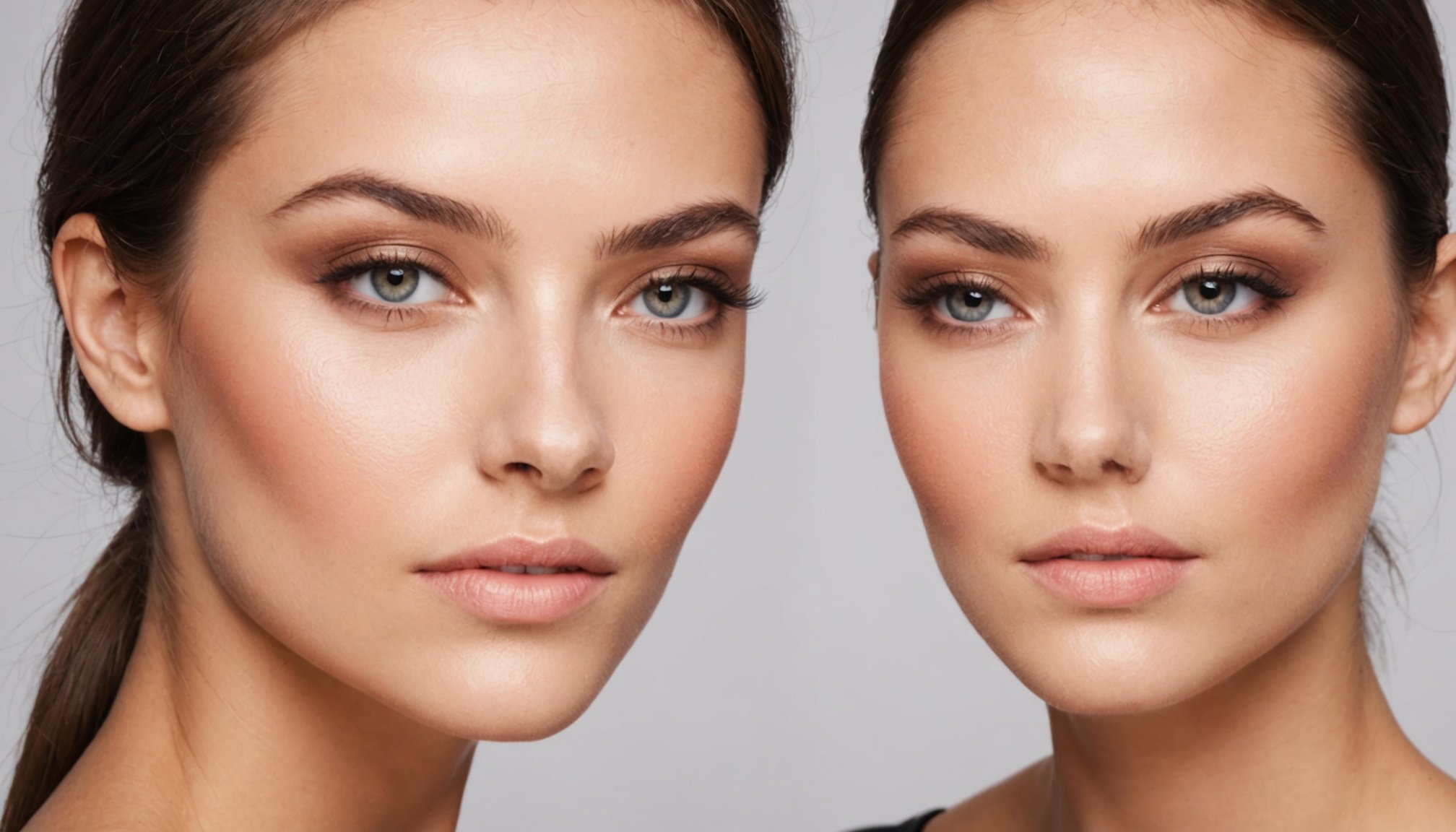Overview of Powder and Spray Makeup
Powder makeup is a staple in many beauty routines, used primarily to set foundation, reduce shine, and create a matte finish. These products are packed with pigments and come in compact or loose forms, offering versatility for touch-ups throughout the day. Powder makeup is known for its ease of use and ability to control oil, making it ideal for individuals seeking a clear, refined look that lasts.
Spray makeup, on the other hand, is gaining popularity for its unique application method and dewy finish. This type of makeup is applied via a fine mist, delivering an even and natural coverage that can be adjusted for intensity. Spray formulations are adapted for quick application, appealing to users looking for a flawless and fresh appearance with minimal effort.
Also read : Discover Top UK Brands for Eco-Friendly and Ethical Swimwear Choices
Understanding different makeup types and their distinct characteristics is crucial for achieving all-day wear. Selecting the right option not only enhances your look but also ensures your makeup withstands the demands of your day. When contemplating powder versus spray, consider factors such as skin type, desired finish, and daily activity to effectively tailor your makeup choices for optimal, enduring results.
Application Methods
When it comes to perfecting your look, choosing the right makeup application techniques is essential. Here’s a step-by-step guide for applying both powder and spray makeup:
Have you seen this : Elevate your summer wedding style: trendy jumpsuit outfits you’ll love to wear
Powder Application
- Prepare Your Skin: Begin by cleansing and moisturising your skin. Apply primer to ensure an even base.
- Application: Use a fluffy brush to pick up the powder. Tap off excess, then gently buff the product onto your face using circular motions.
- Setting: Focus on areas prone to oiliness, such as the T-zone. Reapply as needed throughout the day for touch-ups.
Spray Application
- Prepare Your Skin: As with powder, start with a clean, moisturised face and apply a primer.
- Shake the Bottle: For even distribution, shake the spray bottle well before use.
- Application: Hold the bottle about 8-12 inches from your face. Close your eyes and mist your face in a circular motion.
- Setting: Allow the spray to dry naturally, or use a sponge for blending any excess product.
By following these steps, you can harness the full potential of each makeup type, creating a flawless finish suited to your preferences.
Skin Types and Product Suitability
Understanding skin type compatibility is crucial when selecting makeup products. Powder makeup typically excels for those with oily or combination skin. Its oil-absorbing qualities can help manage shine, providing a matte finish that reduces unwanted glossiness throughout the day. However, for individuals with dry skin, powder can sometimes accentuate flaky patches, leading to an uneven texture.
Spray makeup offers versatile skin type suitability. It’s particularly beneficial for dry or sensitive skin as it imparts a refreshing, dewy finish that avoids drying out the skin. The fine mist application hydrates the complexion, promoting a more natural and radiant appearance. For oily skin, using a mattifying spray or setting powder post-application can help control excess sheen.
Recommendations for specific concerns: Individuals with acne-prone skin may prefer non-comedogenic powders that minimize pore occlusion. Meanwhile, those with sensitive skin should opt for hypoallergenic spray foundations to prevent irritation. By aligning skin type and product functionality, achieving an aesthetically pleasing, all-day look becomes more manageable. Consider your unique skin characteristics when deciding between powder and spray makeup to maximize your desired outcome.
Longevity and Wear Time
Understanding the makeup longevity is crucial for selecting the right product to maintain a flawless look throughout the day. When considering long-lasting makeup, both powder and spray options offer distinct wear times.
Powder makeup is renowned for its durability, especially in controlling oil and maintaining a matte appearance. This type can effectively extend wear time by preventing shine and absorbing excess oil, making it a preferred choice for individuals with oily skin.
In contrast, spray makeup may offer a different type of longevity, characterised by its dewy and natural finish. Those with dry skin may find spray makeup remains fresh and vibrant during extended wear, thanks to its hydrating properties, thus avoiding an uneven or patchy appearance. That said, the longevity might be affected in humid conditions without a proper setting spray.
Several user experiences have demonstrated that combining both types can maximise wear time. For instance, applying powder after spray can help lock in moisture while reducing shine. Ultimately, the factors affecting longevity include skin type, environmental conditions, and specific product formulations, offering varied outcomes for both options.
Finish and Aesthetic Appeal
Makeup finish types play a crucial role in your overall appearance. When considering powder makeup versus spray makeup, their finishes can guide your choice.
Powder makeup typically offers a matte finish, ideal for those seeking a refined look with minimal shine. This finish is achieved through formulations that absorb excess oil, reducing shine and providing a smooth canvas. This matte look is often preferred for professional settings or events where a polished appearance is desired.
In contrast, spray makeup provides a dewy finish, delivering a fresh, glowing complexion. The fine mist evenly disperses, imparting a radiant look that enhances natural luminosity. This type of finish is particularly appealing for creating youthful, vibrant looks suitable for daytime wear or casual occasions.
Understanding how makeup finishes affect the overall aesthetic is essential. A matte finish might be beneficial for oily skin types or settings where long wear without shine is needed. Meanwhile, a dewy finish can enhance dry or mature skin, adding hydration and vitality.
Ultimately, your choice can significantly impact the success of your look, catering to personal style preferences and the demands of different settings.
Pricing and Value
Navigating the landscape of makeup pricing can be daunting, but understanding the value proposition of each product type is crucial. Powder makeup generally spans a wide price range. Affordable options can be found in drugstores, offering basic oil control and matte finishes. On the more expensive end, high-end brands provide advanced formulations, often with added skincare benefits, boosting their appeal.
Conversely, spray makeup tends to be slightly more expensive due to the technological intricacies of delivery systems and unique formulations that ensure even application. High-end options promise a flawless finish with premium ingredients, while budget variants still deliver on convenience but may lack lasting power.
For budget-friendly makeup, it is vital to weigh cost against performance. Do affordable powders match the longevity of their pricier counterparts? Can you find a reasonably priced spray that doesn’t compromise on coverage?
Finding a balance between cost and efficacy ensures you enjoy quality results without breaking the bank. Long-lasting makeup often comes with a higher price tag, but investing in products that align closely with your needs, regardless of the price, is the key to achieving satisfactory all-day wear.
Expert Recommendations and User Testimonials
Seeking expert makeup advice can enhance your confidence when selecting products. Professional insights often highlight the ideal applications for both powder makeup and spray makeup. Experts tend to suggest powder makeup for individuals with oily skin due to its oil-absorbing capabilities, ensuring a matte appearance that lasts. Conversely, they recommend spray makeup for those desiring a dewy finish, especially beneficial for dry skin types.
User reviews further illuminate the practical side of makeup choices. Many users praise powder applications for their durability and touch-up ease, while others commend spray makeup for its natural and hydrating effects. Comments frequently reflect the ease of integrating these products into daily routines, emphasizing the significance of precise application techniques.
Regarding makeup product recommendations, experts often advise matching products to skin type and personal style goals. For a versatile look, users can consider combining both types, applying powder makeup to set a base and finish with a spray for a radiant glow.
This consensus among both professionals and users underscores the importance of product functionality alongside personal preference, ultimately guiding individuals towards effective and satisfying makeup experiences.
Pros and Cons
Understanding the pros and cons of powder vs. spray makeup helps in making informed decisions. Powder makeup boasts several advantages. It’s excellent at absorbing oil, making it a go-to for those with shiny skin. The compact nature allows touch-ups anytime and contributes to an all-day makeup option. It offers versatile coverage from light to full, suiting different preferences.
However, powder disadvantages include its tendency to highlight dry patches, which can be problematic for those with dry skin. Application can sometimes appear cakey if not blended properly.
Spray makeup comes with its own set of advantages. It’s hailed for its unique, easy application and ability to deliver a natural, dewy finish—ideal for dry skin types. The even mist ensures a quick, efficient routine, making it a popular choice for a fresh appearance.
Yet, spray’s disadvantages include potential issues with long-lasting wear in humid conditions and the need for a learning curve to master the application technique. It’s also generally less portable, requiring an entire bottle for touch-ups.
Choosing between these options involves weighing these pros and cons based on individual skin type, lifestyle, and desired finish.








